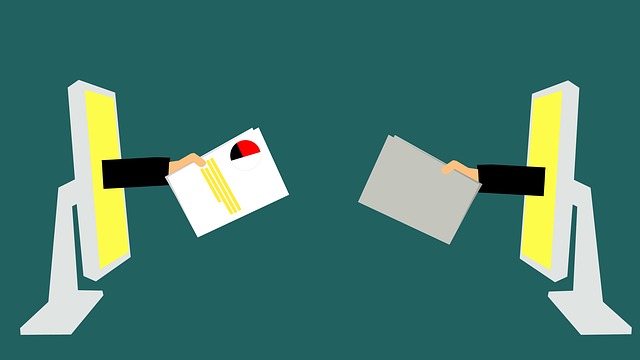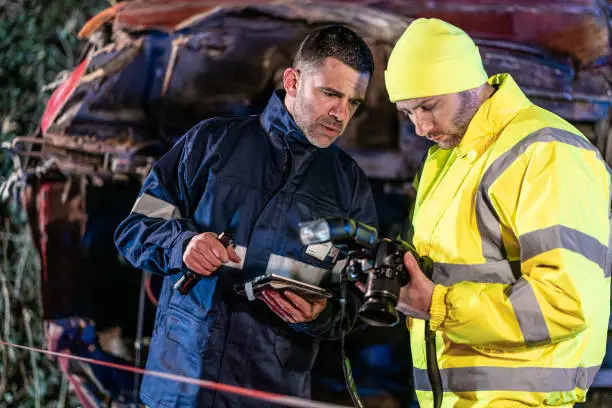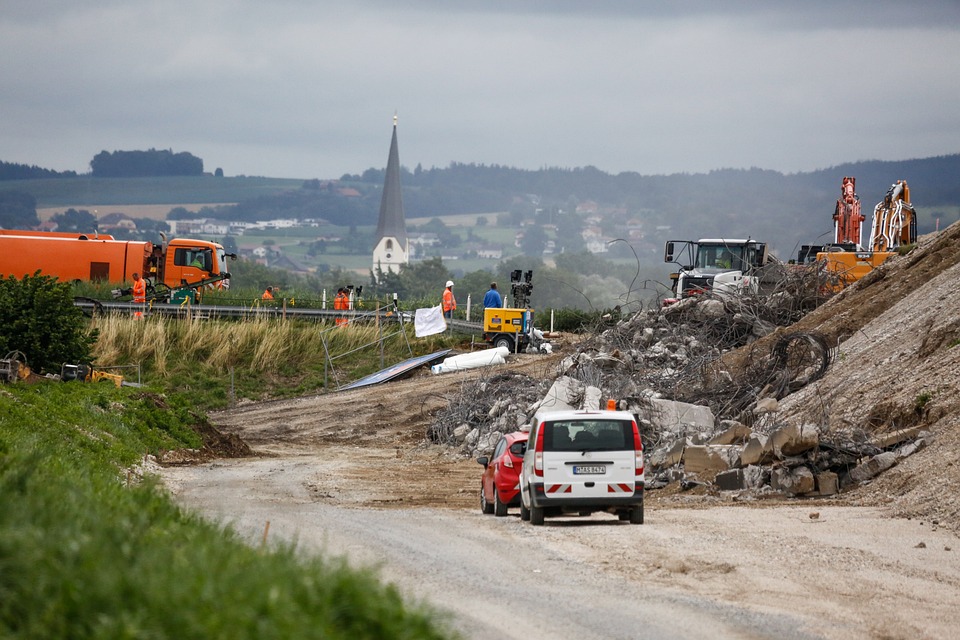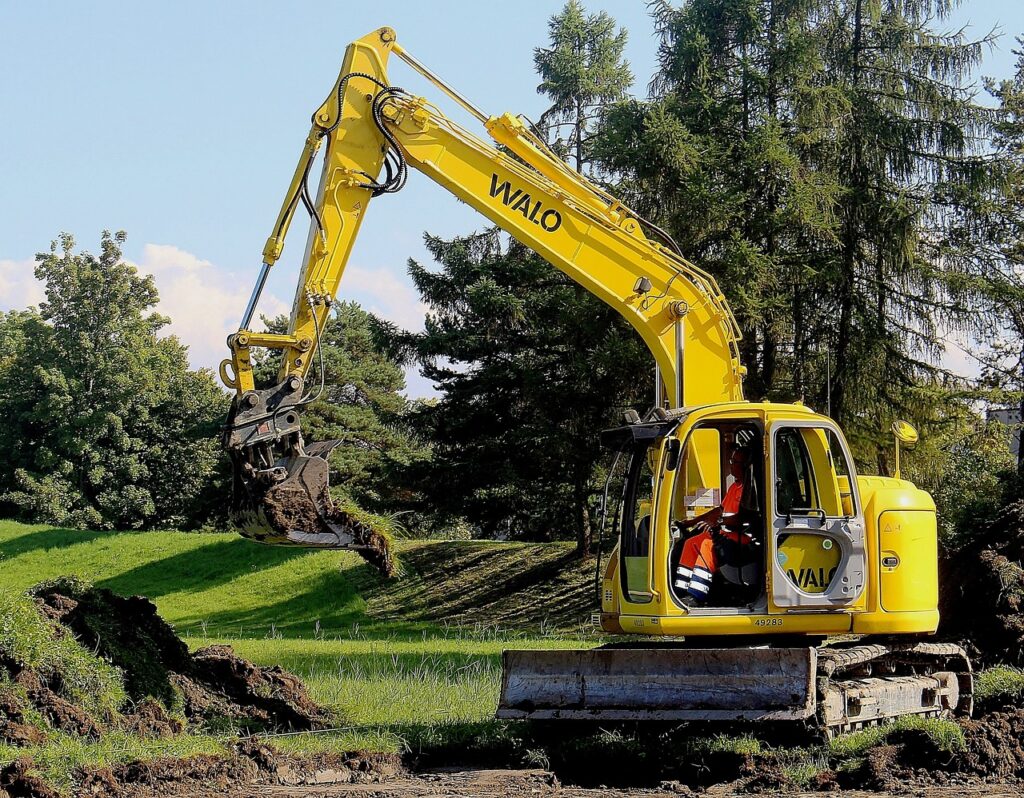An efficient program for occupational health and safety must include both safety audits and safety inspections. By identifying possible risks and implementing remedial measures to prevent accidents and injuries, these procedures ensure that workplaces adhere to relevant safety laws and standards. Additionally, this article will provide a comprehensive examination of safety audits and inspections, encompassing their definitions, methods, components, and advantages.
Definitions
Safety Audit:
To ascertain the degree to which safety requirements are being met, a safety audit serves as a methodical, impartial, and documented process for gathering information and conducting an impartial assessment. Comprehensive assessments of a company’s safety management practices and systems are referred to as safety audits. Their objectives include ensuring compliance with legal mandates, identifying opportunities for improvement, and optimizing overall safety efficacy.
In contrast, a safety inspection involves systematically examining a workplace to identify potential hazards and ensure compliance with safety rules and guidelines. Safety inspections focus on specific aspects of workplace safety, such as equipment condition, housekeeping procedures, and the use of personal protective equipment (PPE). They are typically more targeted than safety audits but play a crucial role in ongoing safety monitoring and compliance.
3.5
How an Audit of Safety Is Conducted

Performing a safety audit entails a number of procedures to guarantee a comprehensive assessment of the safety management system within a firm. This is a detailed how-to:
Organizing and Getting Ready:
Establish the Scope: Establish the parameters for the audit, such as the areas to be examined, the standards to be used, and the audit goals.
reports, and legal requirements.ChatGPT
To put together the audit team, assemble a group of certified auditors who possess the knowledge and impartiality required to conduct the audit objectively. Next, examine documentation by compiling and reviewing relevant papers, such as incident reports, safety policies, procedures, past audit reports, and legal requirements.
Performing the Assessment:
Call an introductory meeting with important staff members to go over the audit procedure, confirm the scope, and answer any queries.
Gather information through a variety of techniques, such as document reviews, observations, and interviews. Safety protocols, training materials, equipment maintenance records, and incident reports should all be examined by auditors.
Site Inspection:
Examine the workplace physically to make sure that safety regulations are being followed and that all conditions and procedures are in place. Make a note of any risks, risky actions, and non-compliant regions.
Assessment and Interpretation:
Compare Against Criteria: Find any gaps or potential improvement areas by comparing the gathered data to the audit criteria.
Root Cause Analysis: To determine the fundamental causes of problems and stop them from happening again, analyze the root causes of issues that have been found.
Reporting:
Write the Report:
Compile a thorough audit report with observations, conclusions, and suggestions for enhancements. The report needs to be precise, succinct, and backed up by data.
Closing Meeting:
Call a meeting to review recommendations, answer any last-minute queries, and submit the audit results to management.
Observation
Action Plan: Create a plan of action to address the audit findings and carry out the necessary corrections. Establish accountability and completion dates for each task.
Monitoring:
Keep an eye on the action plan’s development and confirm that the remedial measures have been successfully carried out.
What Makes a Safety Audit:

A thorough safety audit consists of the following essential components:
Management Commitment and Leadership:
Assess management’s dedication to workplace safety, taking into account the presence of a clear safety policy, leadership participation, and resource allocation.
Safety Culture:
Evaluate the safety culture of the company, taking into account staff engagement in safety initiatives, communication routes, and attitudes toward safety.
Risk Assessment and Hazard Identification:
Examine the procedures for locating, evaluating, and managing potential risks at work. Make that control mechanisms are working and that risk assessments are carried out on a regular basis.
Training and Competency:
Assess the success of safety training initiatives and guarantee that staff members have the skills necessary to carry out their jobs in a safe manner. Make sure that refresher training is offered as needed and that training records are current.
Investigating and Reporting occurrences:
Look at the processes for reporting, looking into, and evaluating occurrences and near-misses. Make sure the necessary steps are taken to prevent a recurrence.
Safety Procedures and Documentation:
Examine the standard operating procedures (SOPs), emergency response plans, and safety manuals, among other safety processes and documentation. Make sure the documents are up to date and easily accessed.
Compliance with Regulations:
Verify that the applicable safety legislation, standards, and industry best practices are being followed. Determine any non-compliance locations and suggest corrective measures.
Safety Performance Monitoring:
Examine the techniques used to track and evaluate safety performance, including key performance indicators (KPIs), audits, and safety inspections.
Procedure for Safety Audits

Safety inspections and audits are integral components of any robust safety management system. First, safety inspections involve a detailed examination of workplace conditions to identify potential hazards and ensure compliance with safety regulations. Furthermore,By conducting regular inspections, organizations can proactively address safety risks and maintain a safe working environment for employees. Moreover, inspections focus on specific areas such as equipment functionality, housekeeping practices, and adherence to personal protective equipment (PPE) guidelines.
On the other hand, safety audits offer a more comprehensive evaluation of an organization’s safety management systems and practices. Unlike inspections, audits delve deeper into the effectiveness of safety policies and procedures across various departments and operations. Additionally, audits provide an unbiased assessment of compliance with regulatory requirements and industry standards. They also pinpoint areas for improvement and opportunities to enhance overall safety performance through targeted interventions and corrective actions.
There are various steps involved in carrying out a safety audit:
Initiation:
The scope, goals, and criteria are established during this phase of the audit process. The audit team is chosen at this step, and the audit activities are scheduled.
Preparation:
In this phase, auditors compile and examine pertinent documentation, create an audit schedule, and create forms such as checklists and questionnaires.
Execution:
The audit is carried out, information is gathered by observations, interviews, and document reviews, and site inspections are carried out during this phase.
Reporting:
Following the audit, auditors draft a thorough report with their findings, conclusions, and suggestions for enhancement.
Follow-Up:
Creating an action plan to address the audit findings but, putting remedial measures into place, and keeping an eye on things to make sure the gains are maintained are all part of the follow-up stage.
The advantages of safety audits:

Safety audits provide businesses with a number of advantages:
Enhanced Compliance:
By ensuring adherence to industry standards and legal regulations, safety audits assist lower the risk of fines and legal ramifications.
Enhanced Safety Performance:
Audits help create a safer workplace by detecting and resolving safety issues, which lowers the risk of accidents and injuries.
Enhanced Awareness:
By fostering a culture of safety and encouraging proactive hazard identification and control, audits increase awareness of safety issues among management and staff.
Continuous Improvement:
Safety audits offer insightful input that may be utilized to enhance safety management procedures and systems but, which promotes ongoing safety performance improvement.
Risk Reduction:
Audits assist in lowering the overall risk of workplace accidents and incidents by spotting possible dangers and putting corrective measures in place.
How to Perform a Safety Inspection?
A safety inspection is a methodical process that entails going over the workplace to find potential dangers/hazards and make sure safety rules are being followed. This is a detailed how-to:
Organizing and Getting Ready:
Establish the Scope: Specify the locations to be examined and the particular safety requirements to be assessed as part of the inspection’s scope.
Put Together the examination Team:
Choose a group of inspectors who has the required knowledge and experience to carry out the examination. Incorporate delegates from other departments to guarantee a thorough evaluation.
Make Checklists:
Make checklists in accordance with applicable safety standards and laws. Important topics including PPE, emergency protocols, housekeeping, and equipment safety should all be covered in checklists.
Performing the Examination:
Call an introductory meeting to go over the goals and procedure of the inspection with important staff members.
Site Walkthrough:
Conduct a visual assessment of the workspace, using the checklists as a reference. Monitor the condition of equipment, work procedures, and general safety conditions.
Furthermore, interview employees to gauge their understanding of safety protocols and address any concerns they may have.
Recognizing Risks:
Documentation:
Keep a record of any dangerous situations or hazards that you see during the inspection. Take pictures or, if needed, draw something.
Prompt Actions:
In the event that any urgent dangers are found, act quickly to resolve them and guarantee worker safety.
Reporting:
Write the Report:
Compose a thorough inspection report that outlines the results, hazards found, and suggested remedial measures.
Closing Meeting:
Call a meeting to review recommended measures and convey inspection findings with management.
Observation
Create an action plan to deal with the hazards that have been identified and put remedial measures in place. Establish accountability and completion dates for each task.
Monitoring:
Keep an eye on the action plan’s development and confirm that the remedial measures have been successfully carried out.
Components of a Safety Evaluation
Several essential components are included in a comprehensive safety inspection:
Physical Conditions:
Examine the workspace’s physical attributes, such as the state of the infrastructure, machinery, and equipment. Keep an eye out for dangers including frayed cables, slick flooring, and insufficient ventilation.
Work Practices:
Pay attention to work practices to ensure that staff members are correctly operating equipment and following safety protocols. Additionally, determine which risky behaviors or shortcuts to avoid.
Evaluate cleaning and organizing techniques carefully. Ensure appropriate material storage and verify proper waste disposal. Confirm that exits and walkways are clear of obstructions as well.
Use of Personal Protective Equipment (PPE):
Ensure that workers are donning the right PPE for the jobs at hand.Verify the availability, good condition, and proper utilization of personal protective equipment (PPE).
Assess the emergency preparation of the workplace, taking into account the accessibility and availability of fire extinguishers, first aid kits, emergency response plans, and emergency exits.
Regulation Compliance:
Verify that the workplace conforms to all applicable safety guidelines and requirements. Determine any non-compliance locations and suggest corrective measures.
Procedure for Safety Inspections
Performing a safety inspection involves several steps:
Initiation:
During this phase of the inspection process, we establish the scope, goals, and criteria. Choosing the inspection crew and planning the inspection tasks are part of this step.
During this phase of preparation, inspectors create inspection checklists, plan inspection activities, and gather and review pertinent documents.
Execution:
The inspection, data collection via observations, interviews, and document reviews, and site walkthroughs are all part of this step.
Reporting:
Following the completion of the inspection, inspectors draft a thorough report that contains their findings, conclusions, and suggestions for enhancement.
Follow-Up:
To guarantee that improvements are maintained, the follow-up step entails creating an action plan to address the inspection findings, putting remedial measures into place, and keeping an eye on the process.
Advantages of Inspections for Safety

Organizations can gain a number of advantages from safety inspections:
Hazard Identification:
By assisting in the identification of possible risks and dangerous conditions at work, safety inspections enable prompt remedial action.
Enhanced Safety Performance:
Inspections create a safer workplace by identifying and resolving dangers, thereby lowering the risk of accidents and injuries.
Assurance of Compliance:
Inspections assist in ensuring adherence to safety guidelines and standards, lowering the possibility of penalties and legal ramifications.
Employee Engagement:
Including staff members in the inspection procedure makes them more conscious of safety concerns and motivates them to take part in keeping the workplace safe.
Safety inspections provide insightful input that we can use to enhance safety management procedures and systems, promoting ongoing safety performance improvement.
How can we guarantee the efficacy of site safety audits and inspections, or what are the different ways to measure the effectiveness of safety audits and inspections?
Maintaining a safe workplace and adhering to safety rules depend on efficient site safety inspections and audits. To guarantee their efficacy, consider these ten crucial points:
1. Set Specific Goals
Specify the objectives of the safety audits and inspections. Set specific goals to focus the process on important safety concerns and consider all relevant factors.
2. Create Detailed Checklists
Make thorough checklists based on industry best practices, legal needs, and industry standards. Checklists include all critical safety issues and guarantee uniformity and completeness in audits and inspections.
3. Choose Eligible Employees
Select inspectors and auditors who possess the required knowledge, education, and experience. Accurately identifying risks, assessing safety measures, and making reliable suggestions are all capabilities of qualified staff.
4. Assure Objectivity and Independence
Make sure that inspectors and auditors are impartial and independent to prevent bias. Their conclusions are more credible as they shouldn’t be directly accountable for the areas they are assessing.
5. Regularly Provide Training
To keep inspectors and auditors informed about the most recent safety laws, industry standards, and best practices, provide them with continual training. Training enhances their capacity to recognize and evaluate possible risks.
6. Engage Workers
Involve staff members in the audit and inspection procedures. Their first-hand expertise and experience can offer insightful information about possible risks and useful safety fixes. Employee involvement also strengthens the safety culture and provides support for corrective measures.
7. Employ Technology
To expedite the inspection and audit process, make use of technologies such as digital checklists, mobile inspection apps, and data analytics tools. Technology has the potential to increase precision, strengthen data gathering, and enable real-time reporting and analysis.
8. Put an emphasis on root cause analysis
When determining the cause of safety concerns, look behind the obvious symptoms. Effective remedial intervention and recurrence prevention depend on addressing the underlying causes.
9. Put Follow-Up Measures Into Practice
Ensure that auditors and inspectors draw concrete suggestions from their conclusions and follow through on them. Create a detailed action plan with designated roles and due dates, and track advancement on a regular basis.
10. Evaluate and Enhance Procedures
Review and enhance the audit and inspection procedures on a regular basis.
Evaluate the success of previous audits and inspections, gather input from relevant parties, and make the necessary changes to improve the procedure over time.
Extra Advice for Conducting Inspections and Audits Effectively

Assure Management Support:
The success of safety audits and inspections depends heavily on the backing of upper management. Management needs to commit to putting ideas into action and set aside enough funds for them.
Standardize Reporting:
To guarantee uniformity and clarity in recording conclusions and suggestions, use standardized reporting forms. Reports that are easy to read and comprehend help to expedite the execution of corrective measures.
Benchmark Against Best Practices:
To find opportunities for improvement and make sure your strategy is still relevant and efficient, compare your safety inspection and audit procedures on a regular basis to industry best practices.
Effectively Communicate Results:
Inform management and staff, as well as any other pertinent parties, of the findings from audits and inspections. Building confidence and ensuring that everyone is aware of safety risks and their responsibilities in addressing them are two benefits of transparent communication.
Establish a Positive Safety Culture:
Encourage employees to report risks and make improvements, and prioritize safety above all else. Audits and inspections are more effective when there is a strong safety culture.
Organizations may make sure that their site safety audits and inspections are comprehensive, efficient, and contribute to a safer workplace by putting these principles into practice.
Safety inspections and audits
Safety inspections and audits are critical processes in maintaining workplace safety standards. A safety inspection involves a systematic review of a workplace to identify potential hazards and ensure compliance with safety regulations. This process focuses on specific areas such as equipment condition, housekeeping practices, and the proper use of personal protective equipment (PPE). By conducting regular inspections, organizations can proactively address safety risks, mitigate potential accidents, and create a safer work environment for employees.
On the other hand, safety audits are comprehensive evaluations of a company’s safety management systems and practices. Unlike inspections, audits are more thorough and aim to provide an impartial assessment of safety performance across the organization. They typically involve reviewing policies, procedures, and documentation to ensure compliance with legal requirements and industry standards. Audits also help identify areas for improvement and opportunities to enhance overall safety efficacy through targeted interventions and corrective actions.
Transitioning from inspections to audits, both processes complement each other in enhancing workplace safety. While inspections focus on immediate hazards and compliance issues, audits delve deeper into the effectiveness of safety programs and organizational culture. By integrating both inspections and audits into a cohesive safety management strategy, companies can establish a robust framework for continuous improvement in safety performance, ensuring the well-being of employees and adherence to regulatory requirements.
In summary
Maintaining a safe and legal workplace requires the use of safety audits and inspections. Safety inspections concentrate on locating hazards and guaranteeing adherence to safety regulations, whereas safety audits offer a thorough assessment of an organization’s safety management system. Both procedures entail methodical assessment, gathering, and analyzing data, then reporting and taking corrective action.
Organizations can enhance employee safety, maintain regulatory compliance, and improve workplace safety by regularly conducting safety audits and inspections. Beyond merely ensuring compliance, these procedures also promote a culture of safety that can significantly lower the number of workplace accidents and injuries.


